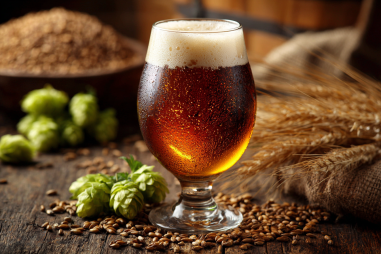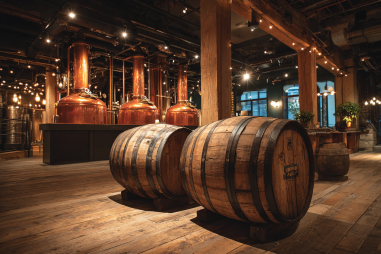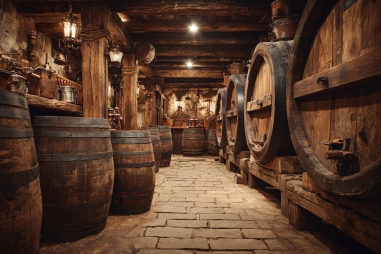Fermentation is the heart and soul of brewing the perfect American Red Ale. This stage is where yeast and wort unite to create the complex flavors and smooth finish that define this beloved craft beer style. Whether you’re a seasoned homebrewer or just starting out, understanding and managing the fermentation process is key to producing a balanced, rich, and satisfying red ale. In this guide, we’ll walk you through everything you need to know about American Red Ale fermentation—from choosing the right yeast strain to handling fermentation times and even troubleshooting common issues.
Understanding Fermentation Basics for American Red Ale
Fermentation is the biological process where yeast converts sugars in the wort into alcohol and carbon dioxide, while also producing a variety of flavor compounds. For an American Red Ale, fermentation influences the beer’s malt-forward sweetness, caramel and toasty notes, as well as the clean or slightly fruity character contributed by yeast. The goal is to strike a balance—you want enough fermentation to fully develop the beer’s complexity without creating off-flavors or harshness.
Many factors impact fermentation quality, including yeast health, pitching rates, temperature control, and timing. Careful attention to these variables will help you maximize flavor potential and ensure a smooth, well-rounded brew.
Choosing the Right Yeast Strain for Red Ales
One of the most important decisions you will make is selecting the ideal yeast strain. For American Red Ales, ale yeast strains, typically from the Saccharomyces cerevisiae family, are preferred because they promote moderate attenuation, preserve malt sweetness, and deliver subtle fruity esters.
Popular yeast strains to consider include:
- Wyeast 1056 (American Ale) – Produces a clean and crisp profile, allowing the malt character and American hop notes to shine.
- Safale US-05 (Dry American Ale yeast) – A reliable and easy-to-pitch strain with clean fermentation and moderate ester production.
- White Labs WLP001 (California Ale) – Known for its clean finish and slight fruity esters, it complements the caramel malt sweetness perfectly.
Choosing a clean fermenting yeast is key because you want to highlight the richness and malt backbone of the red ale without overwhelming it with yeast-driven flavors.
Ideal Fermentation Temperature Ranges
Temperature control can make or break your fermentation. Ale yeast typically performs best between 65°F and 72°F (18°C to 22°C). For American Red Ale specifically, maintaining this moderate temperature range is crucial to balancing ester production and preventing off-flavors such as fusel alcohols or sulfur compounds.
Going too low in temperature can slow fermentation and cause stuck or incomplete fermentation, while too high temperatures can increase unwanted esters and phenols, leading to harsh or solvent-like notes.
To maintain consistent temperatures:
- Use a temperature-controlled fermentation chamber or a simple insulated box with temperature packs.
- Monitor temperatures with a reliable thermometer placed inside the fermenter or nearby environment.
- Adjust ambient room temperature if possible, especially during the most active phase of fermentation.
Monitoring Signs of Healthy Fermentation
Once the yeast is pitched, it’s important to watch for signs that fermentation is proceeding well. Key indicators of healthy fermentation include:
- Visible bubbling: Airlock activity showing CO2 release usually starts within 12-24 hours.
- Krausen formation: A thick foamy head that appears on top of the beer a day or two after pitching.
- Decrease in specific gravity: Using a hydrometer or refractometer, you should see the gravity drop as yeast consumes sugars.
- Clean, pleasant aroma: You should detect malty, slightly fruity smells rather than strong solvent or sulfur aromas.
If you notice a lack of activity or off odors, it may be time to reassess the fermentation conditions or yeast viability.
Managing Fermentation Duration
Fermentation time can vary depending on yeast strain, temperature, and wort composition. Typically, primary fermentation for American Red Ale lasts about 7 to 14 days. The active phase generally finishes within the first week, but allowing the yeast time to clean up metabolic byproducts can enhance the beer’s smoothness.
Regularly take gravity readings to determine when fermentation is complete—when readings remain stable over 2-3 days, the beer is ready for the next step. Rushing off the yeast prematurely can cause off-flavors and underdeveloped beer.
Secondary Fermentation and Conditioning Tips
Secondary fermentation or conditioning is the stage where your American Red Ale develops clarity, mellows flavors, and gains carbonation if bottle conditioning.
This period typically lasts 1 to 2 weeks at slightly cooler temperatures (around 55°F to 65°F / 13°C to 18°C). Transferring the beer off the yeast sediment into a secondary fermenter helps prevent lingering yeast autolysis flavors and promotes cleaner taste.
During this phase, your beer will also naturally carbonate if you’ve added priming sugar for bottle conditioning. Patience is key—allowing your beer to mature and clarify will yield a polished final product.
Troubleshooting Common Fermentation Issues
Even with careful preparation, brewers often encounter fermentation hurdles. Here are some common problems and how to address them:
- Stuck fermentation: Occurs when yeast activity halts early. Solutions include gently rousing the yeast, warming the fermenter slightly, or adding a yeast nutrient.
- Off-flavors like sulfur or solvent notes: Often caused by low fermentation temperatures or stressed yeast. Make sure to ferment within recommended temperature ranges and pitch healthy yeast.
- Slow fermentation starts: May be due to under-pitching yeast or poor yeast viability. Always use a fresh yeast starter or hydrate yeast properly.
- Over-carbonation or bottle bombs: Caused by excess priming sugar or incomplete fermentation. Confirm final gravity before bottling.
Addressing these issues promptly will help keep your American Red Ale tasting its best.
Ensuring Consistent Quality in Your Red Ale
Consistency is the hallmark of a great brewer. To ensure your American Red Ale turns out smooth, flavorful, and balanced every time, keep detailed notes on your fermentation process, strain selection, temperatures, and times. Use quality ingredients and maintain sanitation rigorously to prevent contamination.
By mastering fermentation—from yeast choice to timing and troubleshooting—you can confidently craft American Red Ales that showcase the rich caramel malts, subtle hops, and smooth finishing character this style is known for. Enjoy the process and savor the rewards of your perfect brew.







